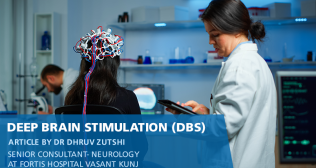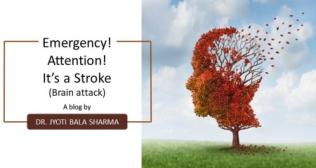
Lumbar Spondylolisthesis - Diagnosis & Treatment
Overview
Derived from a Latin term – spondylolisthesis literally translates to slipped vertebral body. Thereon, spondylolisthesis is described as a condition which generally seems to happen when one of the vertebrae located in the spine tends to slip out of position. Lumbar spondylolisthesis, a type of spondylolisthesis – more often than not – is caused by the occurrence of a degenerative spinal disease, or as a result of a defect in a single region of the vertebra also known as isthmic spondylolisthesis. This could lead to severe back pain along with neurologic deficits as well.
Arguably the most common form of the spondylolisthesis disorder, lumbar spondylosis is a condition that develops gradually over time and is mostly caused owing to the wear-and-tear of the bones that happens due to everyday activities. Moreover, with the progression of age, the discs — which double up as soft-gel like cushions between the vertebral bones — tend to lose their water retention capabilities thus losing their elasticity while being less capable of resisting movement by the vertebrae as well. Degeneration of these areas can thus result in a perceived lack of sponginess while also dramatically increase the chances of it being torn or further damaged. Furthermore, a damage in this area could cause the development of a condition known as slipped disc or disc prolapse – a situation generally associated with people suffering from lumbar spondylosis.
It has also been noticed that this condition is usually more prevalent in women and studies attest to this fact – it has been reported to occur five to six times more frequently in women as compared to men. Besides this factor, there are certain genetic factors that need to be accounted for– mostly race & family history – which increases the likelihood of procuring lumbar spondylolisthesis as well.
Diagnosis
It’s not inconceivable to state that a person having spondylolisthesis might not even have any recognizable symptoms – especially to begin with. In such cases, an individual usually discovers the condition while visiting a physician usually while asking for an opinion on something else entirely.Thereon, on suspicion of a case of lumbar spondylolisthesis, usually, a physical examination is recommended along with several imaging studies including:
- CT Scans
- MRI Scans
- X-rays of the back (including flexion, extension, and standing)
- Neurological studies to check the presence of any electrical activity generated by muscles and nerves
- Radiographic workups through plain radiographs and imaging studies
- Bone Scans
- Myelography
- Single-Photon Emission Computed Tomography (SPECT)
Additionally, in case of any injuries resulting in a fracture, there’s also a possibility of the physician requesting for additional imaging in order to detect the precise locations of the fracture to help assess the individual’s treatment plan better.
Treatment
Living with lumbar spondylolisthesis can prove to be very difficult as it can cause excruciating pain even while doing basic activities such as standing up or sitting down. The goal of a treatment plan is, therefore, to find relief for the pain and seek an improvement in the overall quality of life.
Usually, treatment doesn’t mandate the need for any surgery and most people can continue living with their spondylolisthesis condition with therapy and medication. In that regard, depending on the nature & severity of the condition along with the overall age and health of the individual, a doctor might make the following suggestions:
- Conservative or conventional treatment options usually include physiotherapy coupled with adequate rest, pain medication, and light exercises including yoga & water aerobics. In some cases, a visit to the chiropractor is also recommended.
- Unconventional treatments include the use of epidural steroid injections & nonsteroidal anti-inflammatory drugs (NSAIDs) for pain relief. Therapies such as osteopathic manual therapy & acupuncture can also help in reducing inflammation as well as easing the pain.
Treatment, as stated above, is usually non-operative in nature, and surgery is only required in a small percentage of patients – where there are signs of spinal damage or in cases where the vertebra continues to slip or maybe where extreme pain is being experienced by the patient. However, with the help of surgery, the spine where the vertebra has slipped out of place can be stabilized – thereby drastically improving the individual’s ability to operate while boosting the overall quality of life as well.



















